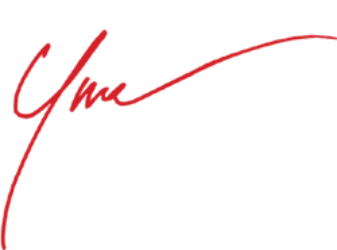Being hunted down and persecuted was the farthest thing from my mind. To be honest my intentions were noble and sincere. Little did I know that for the people I helped experience a better work life, there were just as many who viewed me as a rogue.
I didn’t feel like a criminal, but that was how I was viewed. My crime? Unauthorized use of technology and “hacking” into the enterprise wireless LAN.
IT departments don’t give much leeway to those who don’t respect their rules.
Let’s talk about rules for a minute. They are not the same for everyone. The company president brings his iPad into the office and connects to the WLAN. No one is prosecuting him. The guys in IT also have tablets. But according to the IT dept, my tablet is a career threatening violation. Really? I’m just trying to do my job.
There was a time when I was the favorite son of neighboring departments. I was the person who could (and would) find ways through the roadblocks. No more though. As soon as the shadow IT witch-hunt began, I was labeled a rogue. Persona non-gratis; and those I had helped with their special needs? They all turned their backs on me. At least they didn’t turn me in.
The tech guys are the ones who should be marched in front of HR, not me. Why are we slaves to crappy tools and processes that no one can work with? And why does the business tolerate it?
And here is the ultimate irony. You’ll love this one – according to a recent study conducted by Stratecast (a unit of Frost & Sullivan), IT is the biggest violator of all – 83% of IT staff admits to using non-approved SaaS apps. Do as I say, not as I do; isn’t that how the saying goes?
Alas, times are changing, and the cloud is a key driver. In fact, bring your own cloud is quickly emerging as the new mantra for business and IT, bringing new options and a consumer-like approach to technology tools. Why the change?
- Everybody does it – over 80% (81% LOB, 83% of IT staff). We can probably agree that 80% represents critical mass
- Resource flexibility and access is mission-critical for business and one major evolution in the role of IT
- Employees just want to do their jobs. Users have little patience for obstacles and the business can not afford blocking points for employees or customers
- SaaS use (and opportunity) extends across all application types
So what’s next? Change – lots of change. Enterprise networks and communications have reached a tipping point, heavily influenced by consumerization trends.
- A more flexible and user centric approach from IT departments – more focused on results than rules and KPI’s focused on services vs. PC support
- Users will access their personal clouds on-site and off-site. As personal and professional cloud boundaries continue to overlap, the term hybrid-cloud will refer to both infrastructure and user resources
- The growth of mobile and remote employees will continue. Customers, already highly mobile, will expect access to not only their own wireless networks, but yours too, amplifying the need for unified access to converged networks.
- The need for bandwidth, intelligent networks and policy-based management and analytics has also reached critical mass. Resource-challenged IT leaders need new tools to deliver on service and management demands
- Virtualization will continue to grow. Your data center and applications may be just about anywhere and everywhere, able to add (or trim) capacity in minutes or hours, depending on the requirements.
What’s next? Scale, automation and agility are the new IT reality and user experience is finally taken seriously. Lets also hope that shadow IT witch-hunts will be a thing of the past.
—————–
This commentary was originally written for and published here on the Alcatel-Lucent Enterprise blog. Many thanks to ALE for their interest in my thoughts, and the ability to contribute my voice to their blog.

